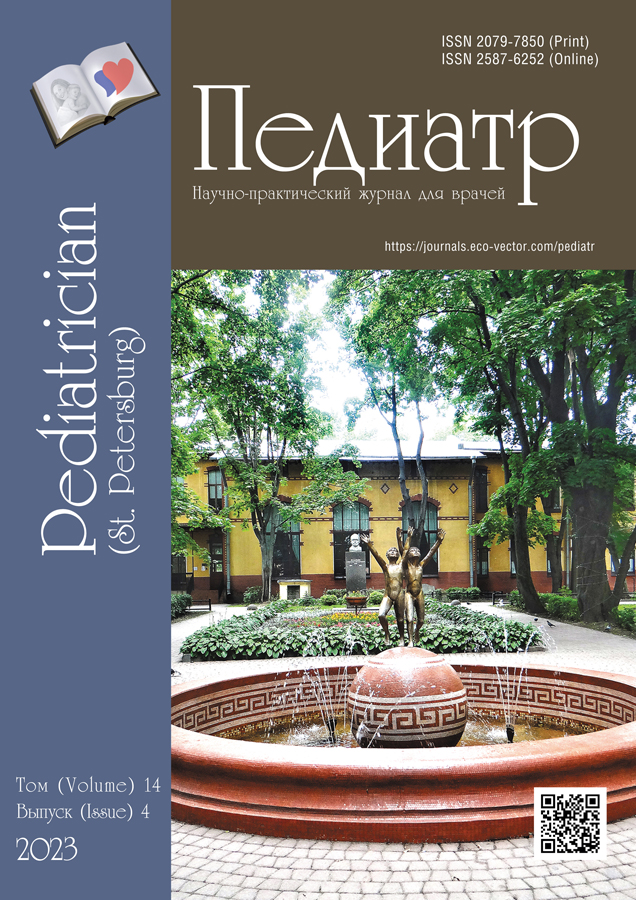Electroencephalographic correlates of lateral dislocation in acute cerebral insufficiency
- Authors: Astakhova E.A.1, Aleksandrova T.V.1, Aleksandrov M.V.2,3
-
Affiliations:
- Dzhanelidze Research Institute of Emergency Medicine
- Kirov Military Medical Academy
- Almazov National Medical Research Centre
- Issue: Vol 14, No 4 (2023)
- Pages: 67-72
- Section: Original studies
- URL: https://journals.eco-vector.com/pediatr/article/view/623711
- DOI: https://doi.org/10.17816/PED14467-72
- ID: 623711
Cite item
Abstract
BACKGROUND: Dislocation syndrome is characterized by a displacement of the median structures in brain and is a consequence of a progressive increase in intracranial volume in vascular accidents, traumatic brain injury, and neoplasms. Lateral dislocation of the median structures leads to their gross dysfunction, as well as to compression of the cortical sections, which leads to violations of the mechanisms of generation of bioelectrical activity. In acute cerebral insufficiency in conditions of scarcity of clinical symptoms, the analysis of changes in the bioelectrical activity of the brain becomes an important part of the diagnosis and prognosis of the course of a critical condition.
AIM: The aim of this study is to characterize the electroencephalography (EEG) patterns recorded in patients with lateral dislocation in the acute period of traumatic brain injury and hemorrhagic stroke.
MATERIALS AND METHODS: The work was based on the analysis of the EEG amplitude-frequency parameters recorded in 74 patients (52 men, 22 women, mean age 53.3 ± 12.5 years) who were treated at the Dzhanelidze Research Institute for Emergency Medicine. The cause of acute cerebral insufficiency in 42 cases was a traumatic brain injury, in 32 cases — a hemorrhagic stroke. Inclusion criteria: 1) lateral dislocation more than 4 mm according to the results of computed tomography; 2) level of consciousness Coma 1 or Coma 2; 3) the outcome of the disease was determined within 23 days from the moment of injury or stroke. 24 observations had a favorable outcome.
RESULTS: According to the results of computed tomography, lateral displacement of the brain structures (Me 9 [6; 16] mm) was revealed in all patients, but without signs of their compression or infringement. Recorded EEG variants were divided into three groups: 1) focal and diffuse disturbances without signs of persistent epileptiform activity of a high index (30%); 2) dominance of gross epileptiform disorders included in the syndromic structure of non-convulsive status epilepticus (59%); 3) isoelectric “silence” of the brain (11%). The degree of lateral dislocation reached its maximum values when registering the bioelectric “silence” pattern. With a favorable outcome of acute cerebral insufficiency, there was practically no correlation between the severity of EEG disturbances and the degree of dislocation. With unfavorable outcomes, dislocation syndrome was a factor that determined the severity of EEG disturbances (r = 0.36). An analysis of the distribution of favorable and unfavorable outcomes showed that the formation of non-convulsive status epilepticus complicates the course of acute cerebral insufficiency, but is not an unambiguous predictor of an unfavorable outcome (χ2 = 0.589, p = 0.44).
CONCLUSIONS: Thus, the bioelectrical activity of the brain recorded in patients with acute cerebral insufficiency complicated by lateral dislocation, reflects both general cerebral and focal changes. In 60% of patients with lateral dislocation of the midline structures of the brain on the EEG, patterns are formed corresponding electrographic patterns of nonconvulsive status epilepticus.
Full Text
About the authors
Ekaterina A. Astakhova
Dzhanelidze Research Institute of Emergency Medicine
Author for correspondence.
Email: katastakhva@gmail.com
ORCID iD: 0009-0004-8538-5348
Doctor of functional diagnostics, Department of Clinical Neurophysiology
Russian Federation, Saint PetersburgTatyana V. Aleksandrova
Dzhanelidze Research Institute of Emergency Medicine
Email: tata-al@yandex.ru
ORCID iD: 0000-0001-6745-665X
SPIN-code: 3551-5282
MD, PhD, Doctor of Functional Diagnostics, Head of the Department of Clinical Neurophysiology
Russian Federation, Saint PetersburgMikhail V. Aleksandrov
Kirov Military Medical Academy; Almazov National Medical Research Centre
Email: mdoktor@yandex.ru
ORCID iD: 0000-0002-9935-3249
SPIN-code: 5452-8634
MD, PhD, Dr. Sci. (Med.), Professor, Head of Clinical Neurophysiology Department, Polenov Neurosurgical Institute; Head of the Department of Normal Physiology
Russian Federation, Saint Petersburg; Saint PetersburgReferences
- Aleksandrov MV, Ivanov LB, Lytaev SA, et al. Ehlektroehntsefalografiya. Ed. by M.V. Aleksandrov. Saint Petersburg: SpetsLit, 2020. 224 p. (In Russ.)
- Astakhova EA, Aleksandrova TV, Aleksandrov MV. Osobennosti bioehlektricheskoi aktivnosti golovnogo mozga pri lateral’noi dislokatsii. Ed. by RASFD. Moscow: Izdatel’stvo FGAOU VO Pervyi MGMU im. I.M. Sechenova Minzdrava Rossii, 2022. 44 p. (In Russ.)
- Voznyuk IA, Savello VE, Shumakova TA. Neotlozhnaya klinicheskaya neiroradiologiya. Insul’t: monografiya. Saint Petersburg: Foliant, 2016. 128 p. (In Russ.)
- Grigorieva EV, Godkov IM, Polunina NA, Krylov VV. The features of cerebral aneurysms hemodynamics. Russian journal of neurosurgery. 2013;(3):76–79. (In Russ.)
- Grishchenko KN, Vismont FI. Patologicheskaya fiziologiya nervnoi sistemy: uchebno-metodicheskoe posobie. Minsk: BGMU, 2009. 24 p. (In Russ.)
- Dergunov AV, Kruglov VA, Kruglova MA, Leont’ev OV. Patologicheskaya fiziologiya nervnoi sistemy: uchebnoe posobie. Saint Petersburg: SpetsLit, 2019. 94 p. (In Russ.)
- Dzenis YuL, Sverzickis RJ, Dolgopolova JD. Dislocation syndrome and brainstem herniation (review and first experience surgical treatment for nontraumatical intracerebral haematomas in large hemispheres). Meditsinskie novosti. 2020;(7):30–38. (In Russ.)
- Kryzhanovskii GN. Obshchaya patofiziologiya nervnoi sistemy: rukovodstvo. Moscow: Meditsina, 1997. 349 p. (In Russ.)
- Krylov VV, Petrikov SS, Talypov AE, et al. Modern principles of surgery severe craniocerebral trauma. Russian Sklifosovsky Journal of “Emergency Medical Care”. 2013;(4):39–47. (In Russ.)
- Likhterman LB. Cherepno-mozgovaya travma. Diagnostika i lechenie. Moscow: GEOTAR-Media, 2014. 488 p. (In Russ.)
- Fraerman AP. Cherepno-mozgovaya travma: uchebnoe posobie dlya vrachei. Nizhny Novgorod: Nizhegorodskaya GMA, 2011. 108 p.
- Hirsch LJ, Fong MWK, Leitinger M, et al. American Clinical Neurophysiology Society’s standardized critical care EEG terminology: 2021 version. J Clin Neurophysiol. 2021;38(1):1–29. doi: 10.1097/WNP.0000000000000806
- Luders HO, Noachtar S. Atlas and classification of electroencephalography. Philadelphia: WB Saunders, 2000. 203 p.
- Niedermeyer E, Lopes da Silva FH. Electroencephalography. Basis, principles, clinical applications related fields. Philadelphia-Baltimore; New York: Lippincott Williams and Wilkins, 2005. 1309 p.
- Sutter R, Kaplan PW. Electroencephalographic patterns in coma: When things slow down. Epileptologie. 2012;29:201–209.
Supplementary files








